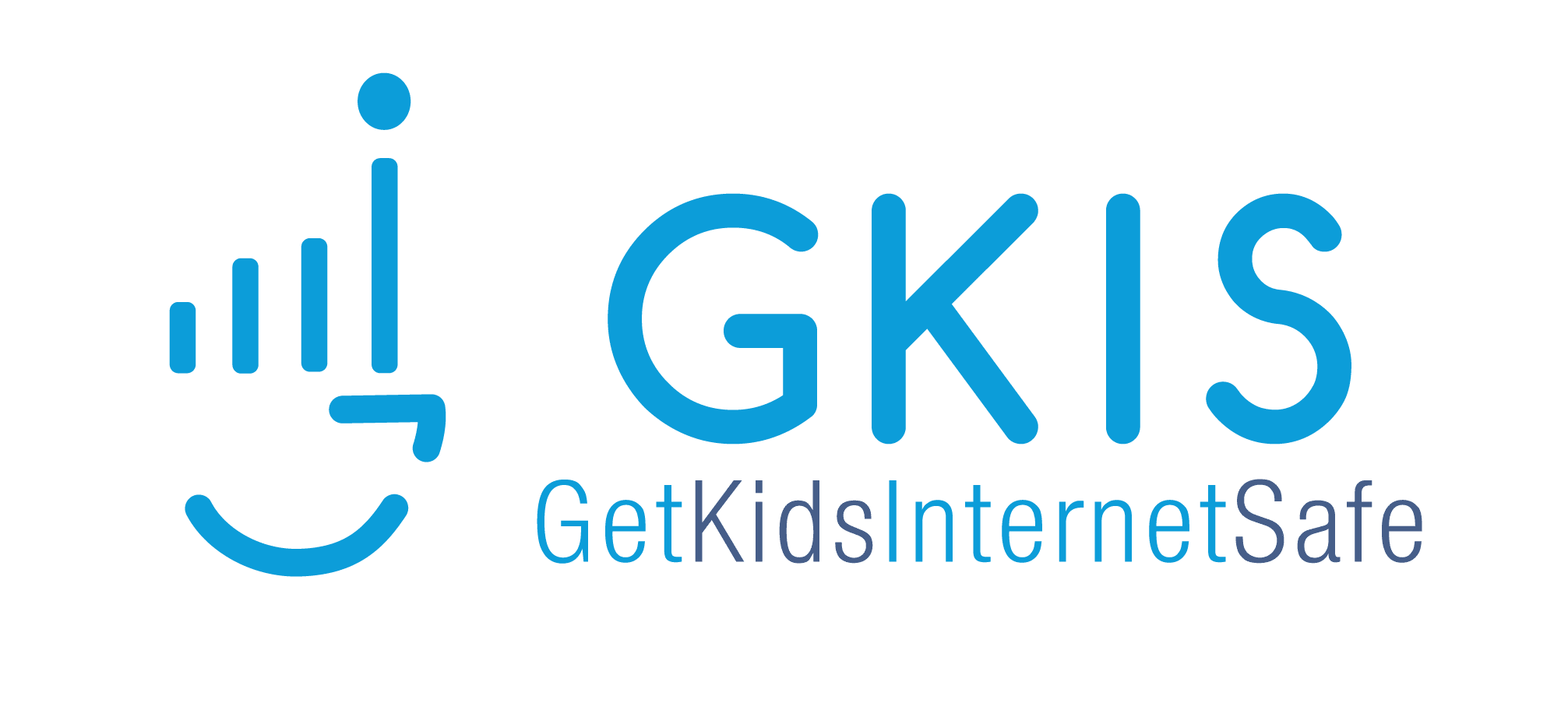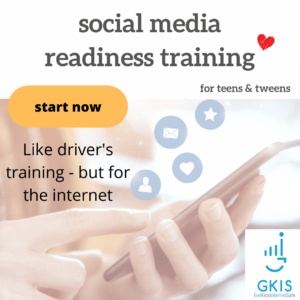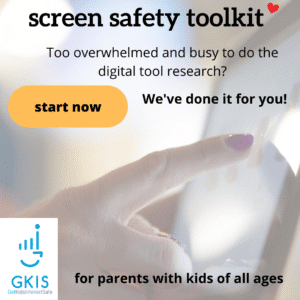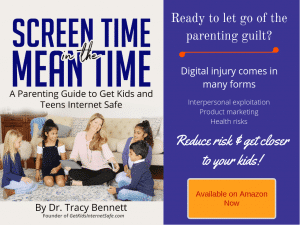
My brother has been living in Singapore, Malaysia, for his freelance job. He recently told me he feels like he is constantly on screen and thinks his virtual life is overtaking his nonvirtual life. He also noticed that it’s impossible engage his friend’s kids away from their screens. He shared with their dad that he was concerned the kids were screen-addicted. The Dad brushed it off, saying all kids are screen addicted. He said they’d grow out of it. No big deal.
Online Overdose in Singapore
Except in India, Singapore citizens spent more time online than people from any other country in the world. More than half of Singaporeans admit that they are online for as many as 12 hours a day.[1]
Screen addiction has been defined as 38 hours or more of screen use per week or screen use that causes impairment in work and relationships, a loss of control (inability to stop despite unpleasant consequences), and evidence of tolerance (increasing use to get the same sense of satisfaction) and withdrawal (irritability and anxiety when prevented from screen time).

For some families, too much turns into way too much. Due to high screen addiction numbers, Asian countries like China, South Korea, and Singapore have more inpatient (hospital) treatment facilities for screen addictions than any others.
We may not want to face it, but based on alarming statistics American kids may be catching up. 28% of American adults now report that they go online “almost constantly,” up from 21% in 2015.[2] Over 50% of teens feel they are addicted to their smartphones.[3] Perhaps Americans have things to learn from Asians in terms of clinical treatment and government regulation.
Rules & Regulations
The Cinderella/Shut Down Law
At the last stroke of midnight, the spell will be broken ~ Fairy Godmother
Too many parents are naïve about the risks of screen addiction. In response to rising child addiction rates, the South Korean government implemented the Cinderella or Shut Down Law.[4] This law blocks access to gaming websites from midnight until 6 AM for those under the age of 16. South Korean parents are only allowed access after midnight if they enter their social security number. The idea behind this law is to force teenagers to sleep instead of game, ultimately improving school performance.[5]
The Cooling-Off System
Another approach from the South Korean Government to regulate screen use is the Cooling-Off System. It aims to regulate screen time by programming the gaming system to shut down automatically every 2 hours for 10 minutes, with gamers only able to log back on once every 24 hours.[6] Because screen addiction is connected to adolescent bullying and suicide, the idea behind this law is to get these issues under control.
Screen Addiction Treatment
If you worry that someone you know needs help with screen addiction, learning about the different types of treatment will be helpful.
Outpatient Treatment
Outpatient treatment includes day programs that clients attend while maintaining a normal school schedule and home life. Schedules typically vary from one to six hours/day. Addiction treatment programs offer services like:
- individual and group psychotherapy,
- psychoeducation,
- medical evaluation and management,
- art and music therapy,
- life skills and mindfulness training, exercise and yoga,
- academic tutoring,
- job training, and
- general skill-building programs, like goal setting, relaxation, and assertiveness and social skills.
Well-rounded treatment is based on the biopsychosocial team treatment model. This means that all aspects of the individual are cared for from the brain, self, and environment by a team of experts.
Outpatient care is usually preferable for mild to moderate screen addiction.
Inpatient Treatment
Inpatient treatment means that clients sleep on-site and are offered round-the-clock medical and therapeutic services like those listed above, either voluntarily or involuntarily. Involuntary treatment may be indicated only in cases of danger to self or others, like suicide or homicide, or the inability to get food, shelter, or medical care due to severe mental illness.
Inpatient treatments are the first choices in treating kids with serious screen addiction. Examples of impairment related to screen use include eating disorders, reduction of brain capacity, and repetitive use injuries like eye strain, hearing loss, and back and neck pain.[7]
China is at the forefront when it comes to inpatient treatment. There are over 250 inpatient treatment boot camps in Asia. Screen addiction boot camps combine military discipline with traditional clinical techniques to overcome addiction. These programs incorporate excessive workouts, group punishments, music, art, and psychological counseling to get clients free of their screens.
According to Tao, who began specializing in addiction treatment in 1991, these are necessary and inevitable methods to teach discipline in the treatment of addicted kids.[7] In his screen addiction boot camp, the children stay from three to six months dependent on their progress. Tao boasts a success rate of 75% since 2008, which is far higher than recovery statistics from traditional inpatient addiction treatment. Tao admits that long-term success is difficult to maintain. While most kids will soon fall back to old patterns after leaving the camp, Tao designed an after-care schedule while also educating parents on how to supervise their child’s gradual reintegration to the web.

What you can do to GetKidsInternetSafe and avoid screen addiction
- Be perceptive and get to know your child, offline and online.
- Set limits.
- Create opportunities for fun offline activities and encourage a healthy lifestyle.
- Read together.
- No screens in the bedroom, bathroom, or behind closed doors.
- No screens at mealtime.
A 2014 study found that old-school family dinners decrease the risk of adolescent mental health issues and cyberbully victimization.[8] Screens at mealtime are also associated with poorer family communication and poorer nutrition choices.[9] Mealtime and car rides are awesome opportunities to inquire about your child’s daily highs and lows, share screen-relevant stories, and teach important skills that will get your kids Internet safe.

I’m the mom psychologist who will help you GetKidsInternetSafe.
Onward to More Awesome Parenting,
Tracy S. Bennett, Ph.D.
Mom, Clinical Psychologist, CSUCI Adjunct Faculty
GetKidsInternetSafe.com
Works Cited
Bogart, N. (2014). Top apps that give parents control over kids screen time. For: Global News, retrieved April 30th, 2017 from: http://globalnews.ca/news/1441624/top-apps-that-give-parents-control-over-kids-screen-time/
[3] Common Sense Media. (2016). Dealing with devices: The parent-teen dynamic; Are we addicted? Retrieved from https://www.commonsensemedia.org/technology-addiction-concern-controversy-and-finding-balance-infographic [8] Elgar, F. J., Napoletano, A., Saul, G., et al. (2014). Cyberbullying Victimization and Mental Health in Adolescents and the Moderating Role of Family Dinners. JAMA Pediatr. 2014;168(11):1015-1022. doi:10.1001/jamapediatrics.2014.1223Flisher, C. (2010). Getting plugged in: An overview of Screen addiction. Journal of Paediatrics and Child Health 46, p. 557–559 [9] Fulkerson, J. A., K. Loth, M. Bruening, J. Berge, M. E. Eisenberg, and D. Neumark-Sztainer. “Time 2 Tlk 2nite: Use of Electronic Media by Adolescents during Family Meals and Associations with Demographic Characteristics, Family Characteristics, and Foods Served.” Journal of the Academy of Nutrition and Dietetics. U.S. National Library of Medicine, July 2014. Web. 21 Apr. 2017. [6] Hawkins, M. (2012). South Korea introduces yet another law to curb gaming’s ills. For: NBC News. Retrieved April 4th, 2017 from: http://www.nbcnews.com/tech/video-games/south-korea-introduces-yet-another-law-curb-gamings-ills-f158168 [4] Lee, J. (2011). South Korea pulls plug on late-night adolescent online gamers. For CNN. Retrieved March 17th, 2017 from http://www.cnn.com/2011/11/22/world/asia/south-korea-gaming/ [5] McLellan, H.(2011). South Korea’s “Shutdown Law” Takes Effect. For: The Escapist Magazine. Retrieved April 4th, 2017 from
http://www.escapistmagazine.com/news/view/114369-South-Koreas-Shutdown-Law-Takes-Effect [2] Pew Research here
Rowan, C. (2010). Unplug-don’t drug: A critical look at the influence of technology on child behavior with an alternative way of responding other than evaluation and drugging. Ethical Human Psychology and Psychiatry, 12, 60–68.
Wieland et al. (2005). Computer Addiction: Implications for Nursing Psychotherapy Practice. Perspectives in Psychiatric Care Vol. 41, No. 4
[1] Williams, A. (2014). Singaporeans are second most Internet-addicted people in the world: Survey. For the straitstimes.com. Retrieved March 6th, 2017 from http://www.straitstimes.com/business/singaporeans-are-second-most-Internet-addicted-people-in-the-world-survey [7] Zigor, A. (2015). Inside the Chinese boot camp treating Screen addiction. For: The Telegraph. Retrieved March 17th, 2017 from http://www.telegraph.co.uk/news/health/11345412/Inside-the-Chinese-boot-camp-treating-Internet-addiction.htmlPhoto Credits
Baby Wearing Pink Crew Neck Cap Sleeve Shirt Between 2 Person Standing during Daytime, 2016, CC0 1.0
Don't worry, we will never spam you.










